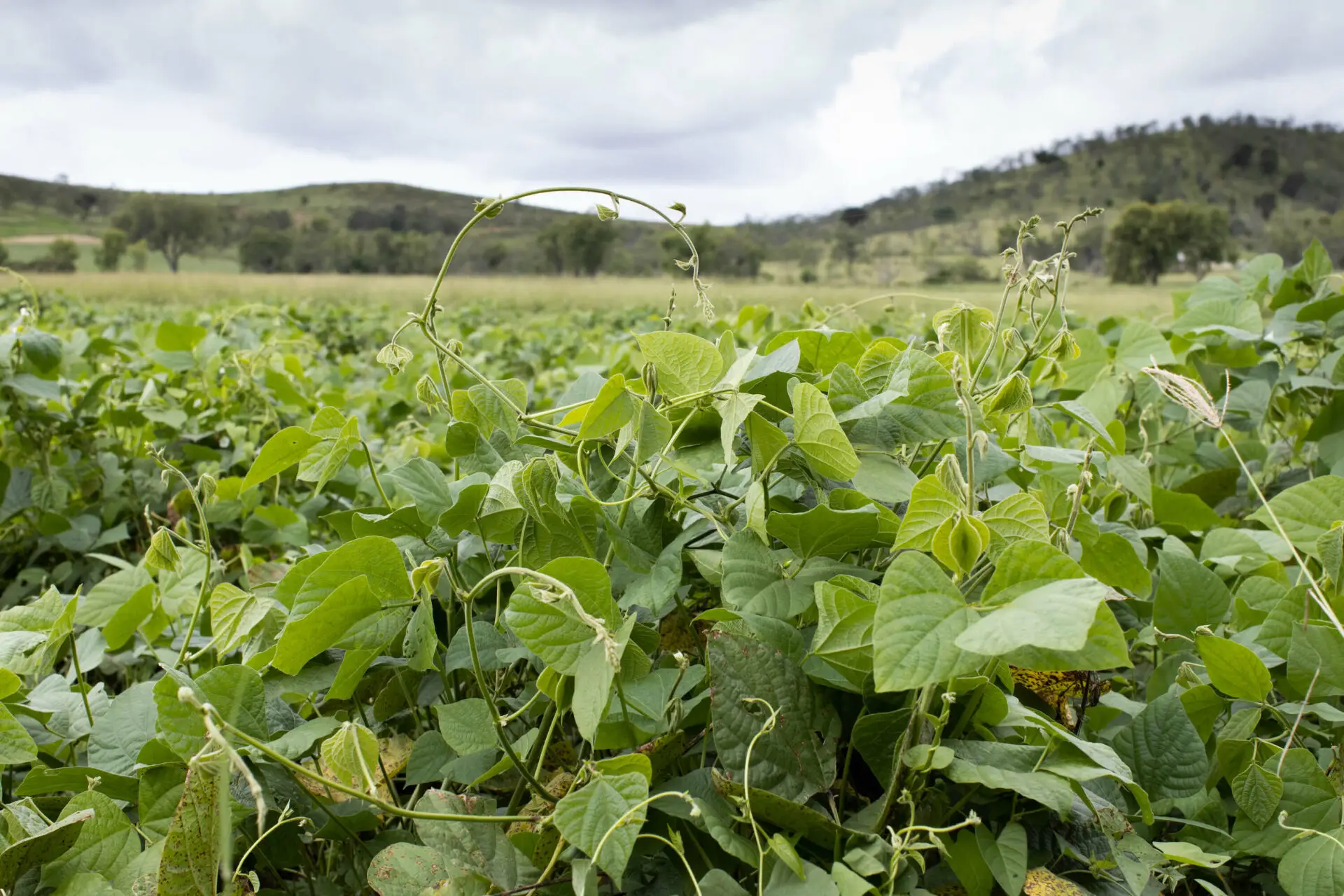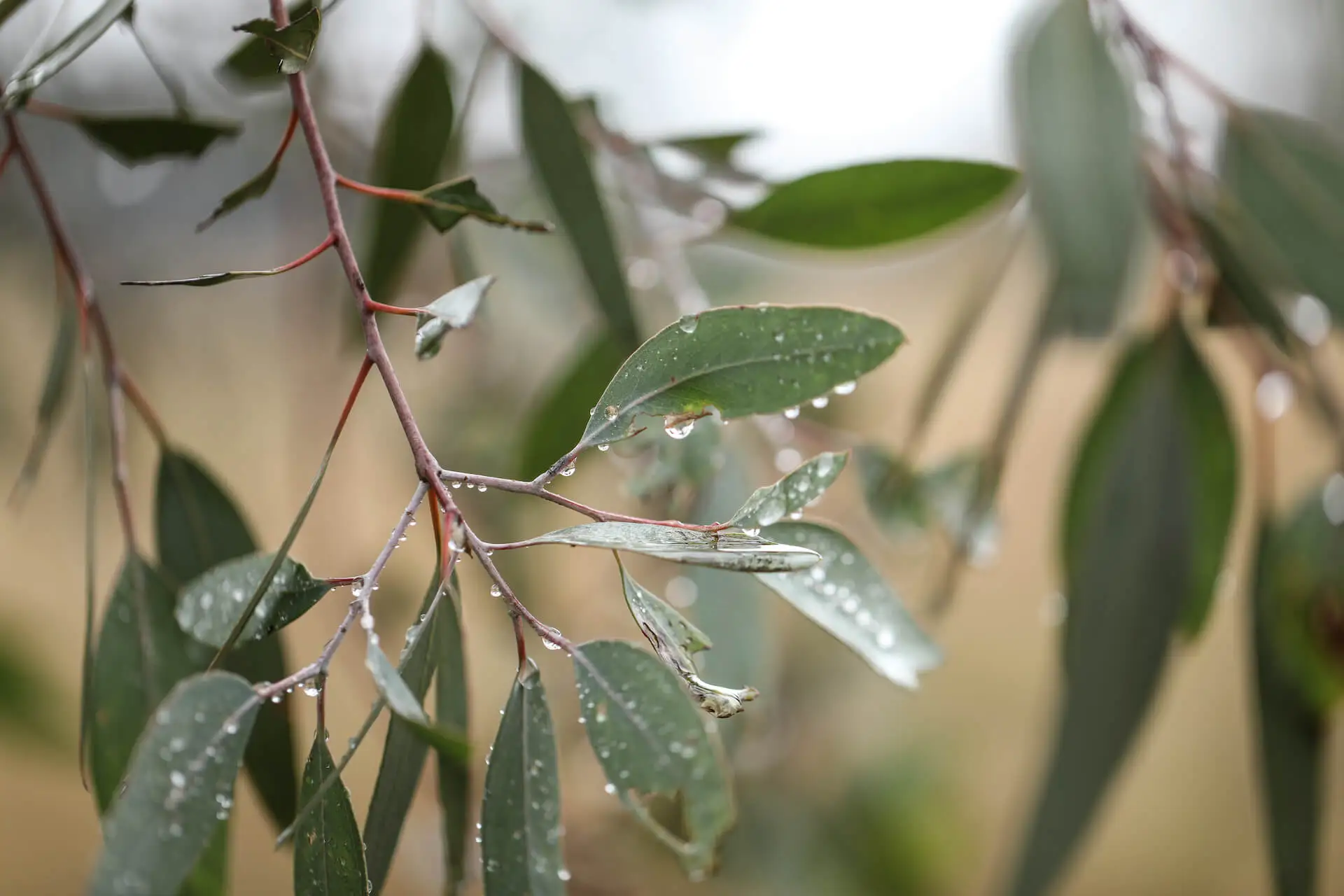Organic farming and the environment
Organic farming reduces the negative environmental impacts of agricultural production. Organic food is produced using sustainable farming methods that imitate natural ecological processes. It does not disrupt ecosystems with the use of synthetic pesticides, herbicides, fertilisers, or GMOs which may be harmful to the environment. Food produced organically also helps to reduce the impact of chemical run-off such as nitrogen, phosphorus, and pesticides from farms[1].
Organic farms have lower greenhouse gas (GHG) emissions
Organic farming can help mitigate climate change and lower agricultural GHG emissions compared to non-organic practices. Synthetic nitrogen fertilisers common in non-organic farming accounts for around 67% of all cropping emissions[2]. Nitrous oxide is 265 times more potent than carbon dioxide as a greenhouse gas; remains in the atmosphere for over 100 years; and depletes the ozone layer[3][4][5].
“43% of GHG emissions from every conventional loaf of bread eaten comes from the synthetic fertilisers used to grow the wheat.”[6]
Organic farming systems have been shown to emit up to 40% less carbon emissions than non-organic systems in multiple long-term trials[7]. When synthetic pesticides are manufactured, three main GHGs are emitted: carbon dioxide, methane and nitrous oxide[8]. To create the popular herbicide Glyphosate, phosphate ore must first be mined and then refined, further contributing to the emissions produced by non-organic farms.

Organic land also focuses on building healthy soil, which stores considerable carbon and increases drought resilience. More carbon in our soil means less in our atmosphere. Soil erosion, abatement, and reparation is a management priority and must be outlined in an organic farms’ Organic Management Plan. The Organic Management Plan details how farmers will proactively manage their operation to ensure it remains compliant to the organic standards.
Organic matter is the amount of plant material, bacteria, fungi, and other microorganisms (living or dead) present in a soil sample. The more organic matter in a sample, the healthier the soil typically is. Organic methods such as leguminous crop rotations, cover crops, reduced tillage, and compost all contribute to healthy soil. The absence of herbicides and pesticides (which can disrupt soil microbial communities, reduce earthworm populations, and affect nutrient cycling processes) facilitate improved soil health and ecosystem functioning[9].
Organic farms are considered low input systems, with higher nutrient use efficiency compared to non-organic systems[10] for non-renewable resources like phosphorus and potassium. This is integral to future food security. Soil health in organic systems continually increases over time whilst remaining essentially unchanged in non-organic systems[11].
Soil is the crux of organic agriculture; therefore, maintaining best practice soil management is key to long term farm sustainability, both economically and environmentally. Increased soil organic matter has a myriad of benefits. Organic soils can retain higher levels of moisture, making organic farms more drought resilient with up to 40% more yield compared to non-organic farms during times of drought and climate extremes[12].
“Drought doesn’t cause bare ground, bare ground causes drought.” Allan Savory, Savory Institute.
Drought is defined as prolonged periods of below average rainfall; however, how the land is managed decides what type of effect drought will have on the agricultural system.
Maintaining constant soil cover through under cropping, crimping systems rather than ploughing or harrowing, minimal or no tillage and correct stocking practices to prevent overgrazing all contribute to minimising the true effects of drought. Improved soil health under organic systems can result in 15-20% more water percolation through soil, replenishing the ground water table and helping organic crops perform well in extreme weather[13]. The principles of organic farming are focused on land regeneration. Organic farms can restore life to damaged soil and promote high levels of biodiversity.

Organic farms are required to have and maintain a minimum of 5% of their farmland dedicated to biodiversity areas. Native areas and borders provide environments for predatory insects like lady beetles and parasitic wasps that control aphids and caterpillars. To control pests, organic systems work with nature instead of relying on harsh pesticides which can kill the whole ecosystem and, to the contrary, make farms even more prone to pest reinfestations.
Synthetic broad-spectrum pesticides that target both pests and beneficial insects are strictly prohibited within organic agriculture. It is well known that the application of pesticides to control pests, weeds, and fungal diseases also impacts on non-target plant and animal species which are equally susceptible to the toxic chemicals. Pesticides have been cited as causing more extinctions than the so-called invasive species they are supposed to eradicate[14], and this has been quantified for different aspects of the ecosystem[15][16][17][18].
This combination of working with nature and pesticide prohibition results in an abundance and richness of beneficial insects such as pollinators and pest predators. This increased biodiversity helps fulfill ecosystem services, increasing food sources for pollinators and modulating the potential negative effects of insect infestations[19].
Organic farms have been shown to support higher species richness in abundance, with a study citing 30% more species than non-organic farms and 50% more abundance[20][21]. The same study showed that birds, predatory insects, soil organisms, and plants respond positively to organic farming, while non-predatory insects and pests respond negatively[22].
Organic systems may have lower yields (tonnes/ha) compared to non-organic systems, especially during initial conversion periods as the soil adapts to the changed practices. However, increased yield per hectare is just one of the outcomes of a complex agroecological system.
Instead of yield, maximum sustainable output per hectare should be prioritised. This is defined as the yield without damaging the land’s natural value. In this age of consumerism where focus is on “cheap” production costs, labour, and end products, what are the externalities of this?
Externalities are the true costs to society in a production system. For example, a farm that uses synthetic fertiliser which runs off into the Murray Darling River and causes algal blooms (eutrophication), killing the local wetland ecosystem. This is an externality of the mentality of using synthetic fertiliser–which may have provided the farmer with short term yield increases, however, the additional associated costs of the destroyed ecosystem will be paid for further down the track or by someone else. These externalities continue outside of freshwater systems, with herbicides such as Diuron linked to the increasing susceptibility of the Great Barrier Reef’s coral to the effects of climate change whilst decreasing their photosynthetic ability[23].
Globally, farmers apply around 115 million tonnes of nitrogen to non-organic crops every year. However, only around 35% of this is used by the plants, leading to 75 million tonnes of nitrogen run-off into rivers, lakes, and natural environments annually[24]. 56% of phosphorus fertiliser is also unused by the crops and, like synthetic nitrogen, may also become an environmental pollutant[25]. Excess nutrient run-off can cause eutrophication and lead to low water oxygen and high toxicity in waterways. Pesticide contamination in water bodies can lead to the decline of aquatic invertebrates, with direct consequences within the food chain as key food sources for fish and other aquatic organisms[26]. These can have adverse environmental effects on marine animal and plant life, as observed earlier this year with the worst fish death in recorded history in the Murray-Darling Basin[27].
The majority of nutrients for organic plants are taken up via humus colloids in the soil rather than from water-soluble synthetic fertilisers. This allows for slower nutrient-release to the plant, therefore lowering the chances of nutrient leaching and eutrophication downstream and the associated environmental degradation.

The premium you pay for organic produce is invested in minimising the potential externalities of the agricultural food system. The next time you shop, think, “what are the hidden environmental costs of buying non-organic, unbranded products versus certified organic equivalents?” Because every choice you make as a consumer goes toward creating a more sustainable future.
Always remember to look for a certification mark such as the Australian Certified Organic Bud logo to make sure your organic purchases are authentically organic.
[1] Tuomisto, H.L., Hodge, I.D., Riordan, P., & Macdonald, D.W. (2012). Does organic farming reduce environmental impacts? A meta analysis of European research. Journal of Environmental Management, 112, 309–320. Available at: https://doi.org/10.1016/j.jenvman.2012.08.018
[2] Tian, H., Xu, R., Canadell, J.G. et al. (2020). A comprehensive quantification of global nitrous oxide sources and sinks. Nature, 586, 248–256. Available at: https://doi.org/10.1038/s41586-020-2780-0
[3] Griffis, T. J., Chen, Z., Baker, J. M., Wood, J. D., Millet, D. B., Lee, X., Venterea, R. T., & Turner, P. A. (2017). Nitrous oxide emissions are enhanced in a warmer and wetter world. Proceedings of the National Academy of Sciences of the United States of America, 114(45), 12081-12085. Available at: https://doi.org/10.1073/pnas.1704552114
[4] Portmann, R. W., Daniel, J. S., & Ravishankara, A. R. (2012). Stratospheric ozone depletion due to nitrous oxide: influences of other gases. Philosophical transactions of the Royal Society of London. Series B, Biological sciences, 367(1593), 1256-1264. Available at: https://doi.org/10.1098/rstb.2011.0377
[5] S. Solomon, D. Qin, M. Manning, Z. Chen, M. Marquis, K.B. Averyt, M. Tignor and H.L. Miller (eds.). IPCC (2007) Climate Change 2007: The Physical Science Basis. Contribution of Working Group I to the Fourth Assessment Report of the Intergovernmental Panel on Climate Change. Cambridge University Press. Cambridge, United Kingdom 996 pp.
[6] Bowles, L. (2021). Opinion: Agro-ecology holds the key to fighting climate change. Farmers Weekly. Available at: https://www.fwi.co.uk/news/opinion-agro-ecology-holds-the-key-to-fighting-climate-change
[7] Moyer, J, Smith, A, Rui, Y and J, Hayden. 2020 Regenerative Agriculture and the Soil Carbon Solution. Rodale Institute, September 2020. Available at: https://rodaleinstitute.org/wp-content/uploads/Rodale-Soil-Carbon-White-Paper_v11-compressed.pdf
[8] Heimpel, G.E., Yang, Y., Hill, J.D., & Ragsdale, D.W. (2013). Environmental consequences of invasive species: greenhouse gas emissions of insecticide use and the role of biological control in reducing emissions. PLoS ONE, 8(8), Article e72293. Available at: https://doi.org/10.1371/journal.pone.0072293
[9] Ruuskanen, S., Fuchs, B., Nissinen, R., Puigbò, P., Rainio, M., Saikkonen, K., & Helander, M. (2022). Ecosystem consequences of herbicides: The role of microbiome. Trends in Ecology & Evolution, 38, 35-43. Available at: https://doi.org/10.1016/j.tree.2022.09.009
[10] Toda, M., Walder, F., van der Heijden, M. G. A. (2023). Organic management and soil health promote nutrient use efficiency. Journal of Sustainable Agriculture and Environment, 2(3), 215-224. Available at: https://doi.org/10.1002/sae2.12058
[11] Rodale Institute. (2022). Farming Systems Trial. Available at: https://rodaleinstitute.org/science/farming-systems-trial/
[12] Moyer, J., Smith, A., Rui, Y. & Hayden, J. (2020, September). Regenerative Agriculture and the Soil Carbon Solution. Rodale Institute. Available at https://rodaleinstitute.org/wp-content/uploads/Rodale-Soil-Carbon-White-Paper_v11-compressed.pdf
[13] Rodale Institute. (2022). Farming Systems Trial. Available at: https://rodaleinstitute.org/science/farming-systems-trial/
[14] Sigmund, G., Ågerstrand, M., Antonelli, A., Backhaus, T., Brodin, T., Diamond, M. L., … & Groh, K. J. (2023). Addressing chemical pollution in biodiversity research. Global Change Biology, 29(12), 3240-3255. Available at: https://doi.org/10.1111/gcb.16689
[15] Beketov, M.A.; Kefford, B.J.; Schäfer, R.B., & Liess, M. (2013). Pesticides reduce regional biodiversity of stream invertebrates. Proceedings of the National Academy of Sciences of the United States of America, 110(27), 11039-11043. Available at: https://doi.org/10.1073/pnas.1305618110
[16] Habel, J.C., Samways, M.J., & Schmitt, T. (2019). Mitigating the precipitous decline of terrestrial European insects: Requirements for a new strategy. Biodiversity and Conservation, 28, 1343-1360. Available at: https://doi.org/10.1007/s10531-019-01741-8
[17] Goulson, D., & Nicholls, E. (2016). The Canary in the Coalmine; Bee Declines as an Indicator of Environmental Health. Science Progress, 99(3), 312-326. Available at: https://doi.org/10.3184/003685016X14685000479908
[18] Raven, P.H., & Wagner, D.L. (2021). Agricultural intensification and climate change are rapidly decreasing insect biodiversity.Proceedings of the National Academy of Sciences of the United States of America, 118(2), Article e2002548117. Available at: https://doi.org/10.1073/pnas.2002548117
[19] Fuller, R., L. Norton, R. Feber, P. Johnson, D. Chamberlain, A. Joys, F. Mathews, R. Stuart, M. Townsend, and W. Manley. 2005. Benefits of organic farming to biodiversity vary among taxa. Biology letters 1(4):431. http://dx.doi.org/10.1098/ rsbl.2005.0357
[20] Stein-Bachinger, K., Gottwald, F., Haub, A., & Schmidt, E. (2021). To what extent does organic farming promote species richness and abundance in temperate climates? A review. Organic Agriculture, 11, 1-12. Available at: https://doi.org/10.1007/s13165-020-00279-2
[21] Bengtsson, J., Ahnström, J., & Weibull, A. (2005). The effects of organic agriculture on biodiversity and abundance: a meta-analysis. Journal of Applied Ecology, 42(2), 261-269. Available at: https://doi.org/10.1111/j.1365-2664.2005.01005.x
[22] Bengtsson, J., Ahnström, J., & Weibull, A. (2005). The effects of organic agriculture on biodiversity and abundance: a meta-analysis. Journal of Applied Ecology, 42(2), 261-269. Available at: https://doi.org/10.1111/j.1365-2664.2005.01005.x
[23] Flores, F., Marques, J. A., Uthicke, S., Fisher, R., Patel, F., Kaserzon, S., & Negri, A. P. (2021). Combined effects of climate change and the herbicide diuron on the coral Acropora millepora. Marine Pollution Bulletin, 169, 112582. https://www.sciencedirect.com/science/article/pii/S0025326X21006160
[24] Ritchie, H., & Roser, M. (2013). Fertilizers. OurWorldInData.org. Retrieved from: https://ourworldindata.org/fertilizers [Online Resource]
[25] Ritchie, H., & Roser, M. (2013). Fertilizers. OurWorldInData.org. Retrieved from: https://ourworldindata.org/fertilizers [Online Resource]
[26] Wood, T. J., & Goulson, D. (2017). The environmental risks of neonicotinoid pesticides: a review of the evidence post 2013. Environmental science and pollution research international, 24(21), 17285-17325. Available at: https://doi.org/10.1007/s11356-017-9240-x
[27] Office of the NSW Chief Scientist & Engineer (OCSE). (2023). Independent Review into the 2023 Mass Fish Deaths in the Darling-Baaka River at Menindee. Available at: https://www.chiefscientist.nsw.gov.au/__data/assets/pdf_file/0005/580658/Menindee-Fish-Deaths-Report_Findings-and-Recommendations.pdf